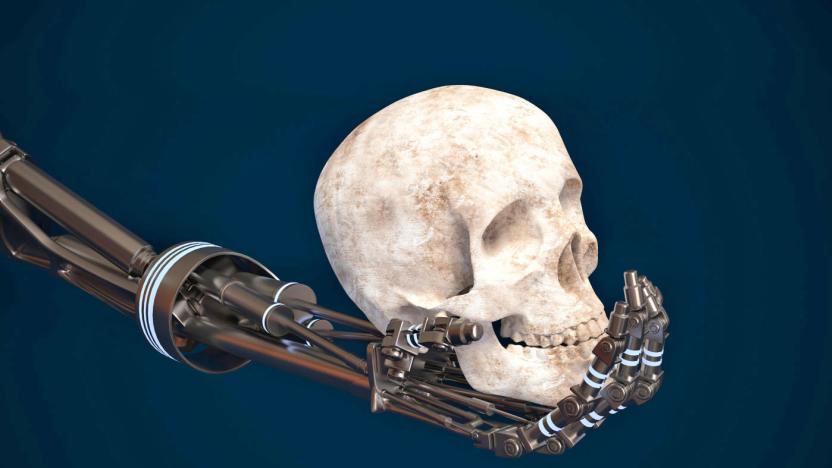JudgmentDay
Latest

Google is working on a kill switch to prevent an AI uprising
Humans don't like the idea of not being at the top of the food chain; having something we've created taking power over us isn't exactly ideal. It's why folks like Tesla mastermind Elon Musk and noted astrophysicist Stephen Hawking are so determined to warn us of the terrifying implications that could culminate in a Skynet situation where the robots and algorithms stop listening to us. Google is keen to keep this sort of thing from happening, as well, and has published a paper (PDF) detailing the work its Deep Mind team is doing to ensure there's a kill switch in place to prevent a robocalypse situation.

Oregon State University's ATRIAS robot takes a walk in the park
We've seen Oregon State University's ATRIAS robot prove its mettle in a controlled environment, sure, but what changes when it goes for a stroll in the great outdoors? Perhaps unsurprisingly, not a whole lot. The biped doesn't have a problem going uphill, downhill, maintaining balance when dodgeballs hit it and even handles variations in terrain with aplomb. It doesn't seem to have any issues changing speed, either. Basically, this proves that the ATRIAS doesn't need perfect conditions to operate, which is important because let's face it: the real world is far from perfect.The upside to all of this is that unlike humans, robots don't quite get stage-fright so replicating these actions in front of a crowd at the DARPA Robotics Challenge come June likely won't be an issue.

FAA approves first drones for commercial operations in US airspace
Insitu's Scan Eagle X200 and AeroVironment's Puma (above) are the first UAVs to snag FAA approval for commercial operations, and they're set to take to the skies later this summer. Prior to this, the only way the private sector could fly an unmanned vessel in US airspace was with an experimental airworthiness certification -- and that cert prohibits business activities. It's worth noting that these craft weigh less than 55 pounds and measure four and a half feet long; they aren't Predator drones, by any means. Come August, a "major energy company" will use the X200 to patrol the Alaskan coast, keeping an eye on ice floes and migrating whales where the firm is doing petroleum exploration. Plans for the Puma sound slightly more action-packed, as it's expected to support oil spill emergency response-crews and watch over wildlife in the Beaufort Sea. See, this is how it all begins: First we start trusting them with our lives, then it all takes a turn for the worse. [Image credit: Wikimedia Commons]
